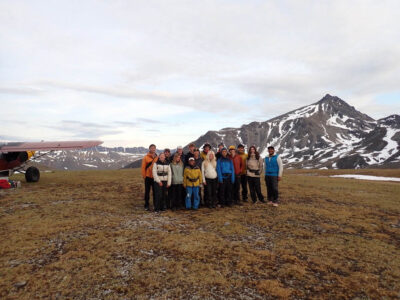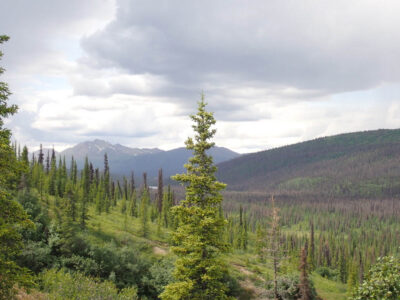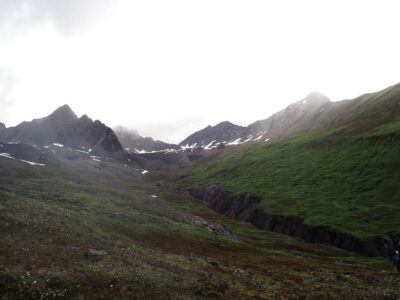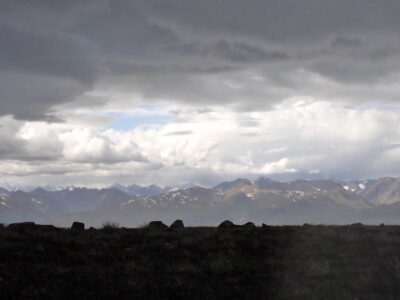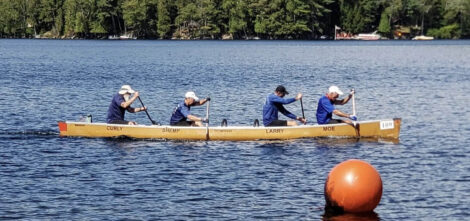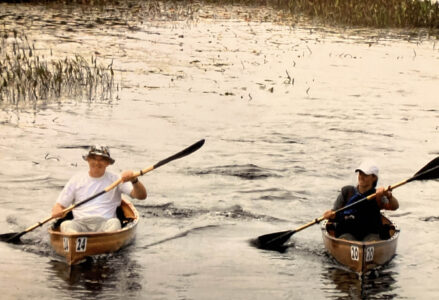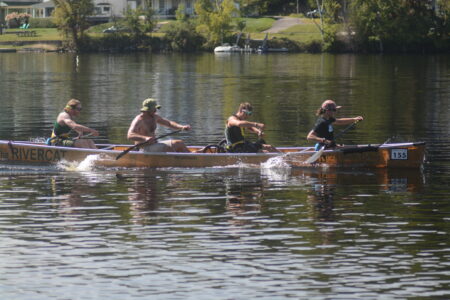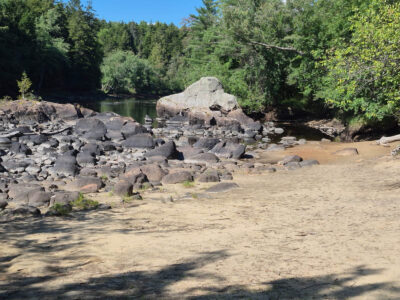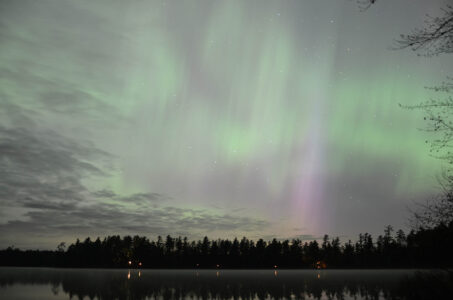Perpetual daylight, grizzly bears and soup pancakes
- A crew of students, including Saranac Lake High School Class of 2025 graduate Liam Fletcher — center, back row, in sunglasses — spent 30 days backpacking in Alaska this summer with the National Outdoor Leadership School. (Provided photo — Amelia Draffen)
- Saranac Lake High School Class of 2025 graduate Liam Fletcher spent 30 days backpacking in Alaska this summer with the National Outdoor Leadership School. (Provided photo — Amelia Draffen)
- Saranac Lake High School Class of 2025 graduate Liam Fletcher spent 30 days backpacking in Alaska this summer with the National Outdoor Leadership School. (Provided photo — Amelia Draffen)
- Saranac Lake High School Class of 2025 graduate Liam Fletcher spent 30 days backpacking in Alaska this summer with the National Outdoor Leadership School. (Provided photo — Amelia Draffen)
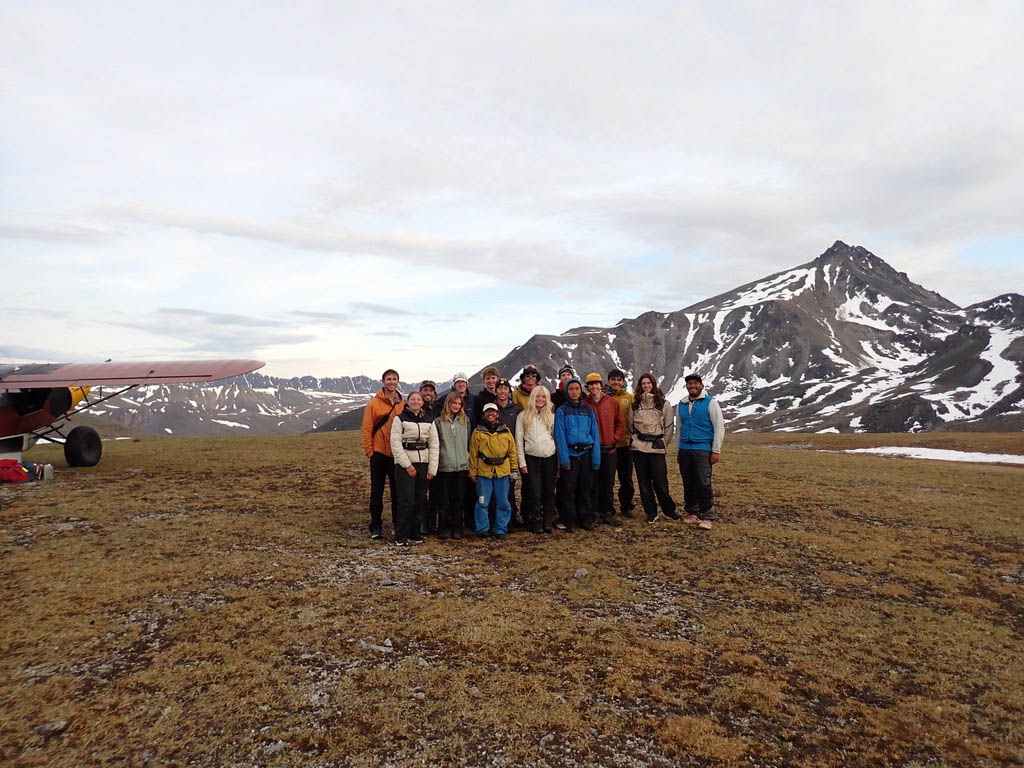
A crew of students, including Saranac Lake High School Class of 2025 graduate Liam Fletcher — center, back row, in sunglasses — spent 30 days backpacking in Alaska this summer with the National Outdoor Leadership School. (Provided photo — Amelia Draffen)
SARANAC LAKE — Over summer break, between finishing Saranac Lake High School in June and starting college this week, 17-year-old Liam Fletcher spent 30 days backpacking through the Alaskan tundra, navigating, surviving and exploring alongside around a dozen other students and instructors from the National Outdoor Leadership School.
On some days, they spent 13 to 14 hours hiking with their 50 to 60 pound packs in the Alaskan perpetual daylight. Some days were 35 degrees with freezing rain and Fletcher couldn’t move his fingers.
They learned first aid, independence, how they act in times of adversity, how to be comfortable being uncomfortable and how to take joy in being physical in a sedentary culture.
Fletcher has a passion for hiking. He and his friend Nate McKay have been hiking the High Peaks together. Fletcher said he has climbed around 30 of the 46ers.
He loves the simplicity of hiking, the physicality of it and the thrill of accomplishing a challenge.
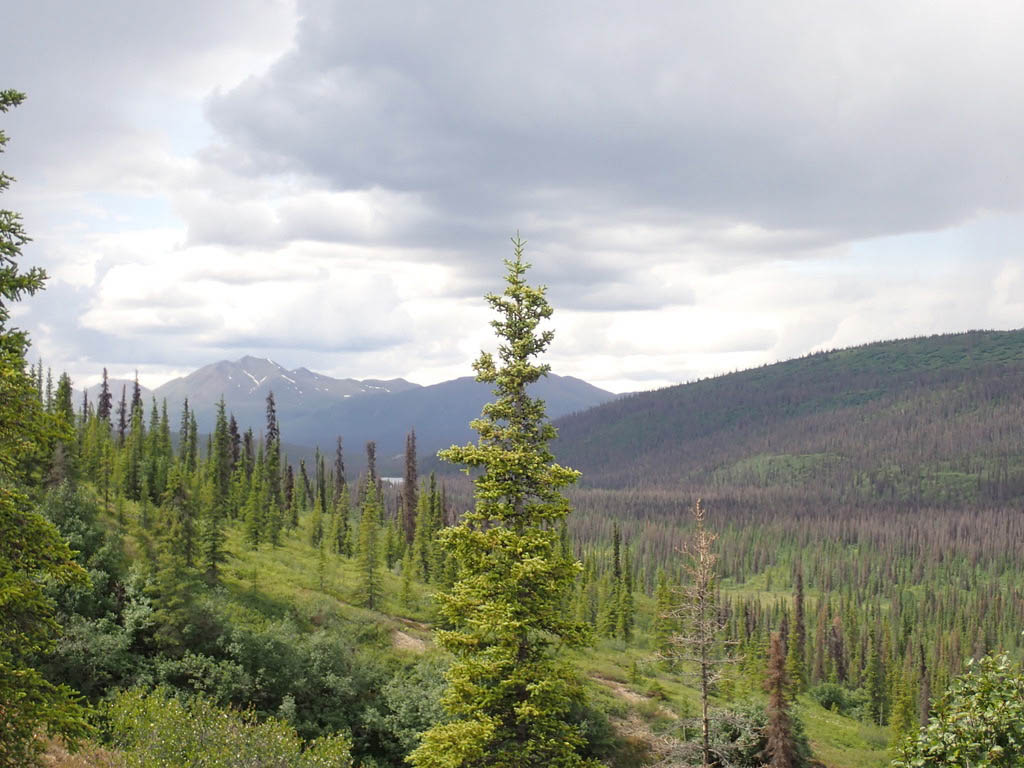
Saranac Lake High School Class of 2025 graduate Liam Fletcher spent 30 days backpacking in Alaska this summer with the National Outdoor Leadership School. (Provided photo — Amelia Draffen)
Being the only one from a small town and one of the few who had backpacked before, he gave his coursemates some advice on pacing themselves early on, but after a day or so, he said the landscape was so different, his knowledge ran out.
Hiking in Alaska was very different than the Adirondacks. Here, the wilderness has marked trails.
“It was open tundra,” Fletcher said of Alaska. “You could go whatever way you wanted. You were looking at the mountains and going, ‘We need to go in that direction to find the campsite that we marked out.'”
They were orienteering with a compass and map, accounting for the compass being 14-degrees off because of the proximity to the North Pole.
–
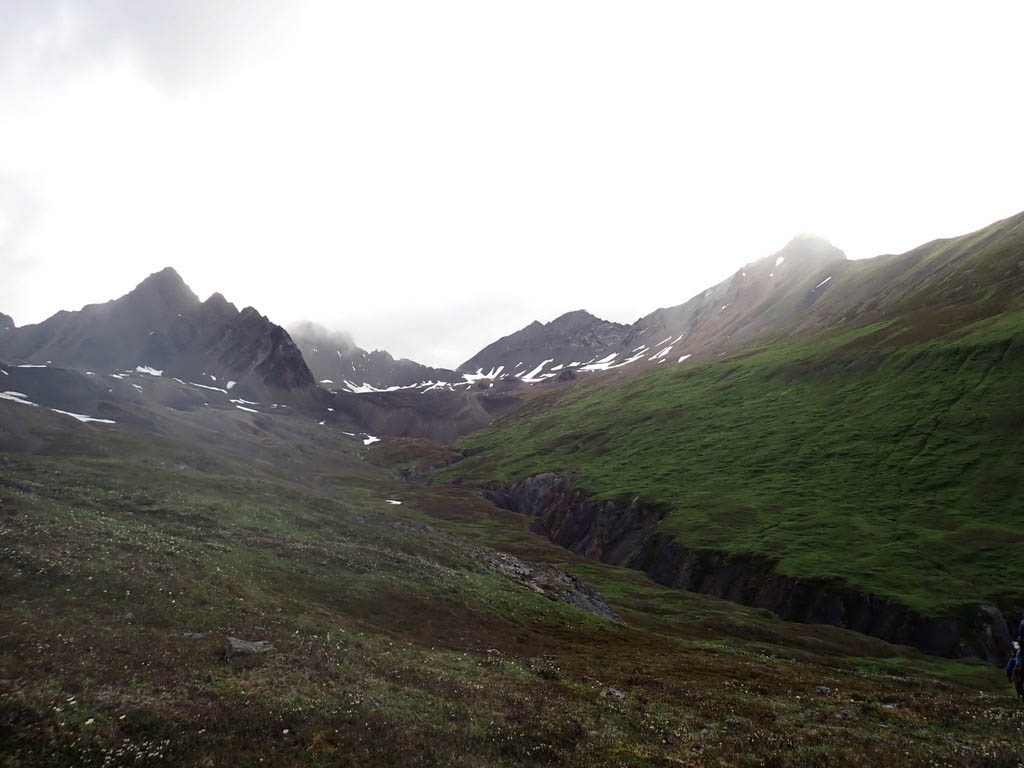
Saranac Lake High School Class of 2025 graduate Liam Fletcher spent 30 days backpacking in Alaska this summer with the National Outdoor Leadership School. (Provided photo — Amelia Draffen)
Scholarship
–
NOLS Northeast Campus Director Whitney Emery learned she had a scholarship specifically for students in the Adirondacks to take a NOLS course. She went to SLHS Principal Josh Dann for recommendations and saw Fletcher was excited and “super-eager” to get in.
Emery said SLHS junior Julia Walkow will be getting the scholarship next summer. Emery said she’ll start taking applications for future years at whitney_emery@nols.edu.
The course offers college credit and is meant to teach leadership skills through wilderness expeditions. Emery said local colleges North Country Community College, Paul Smith’s College and SUNY Plattsburgh all have credit agreements with NOLS.
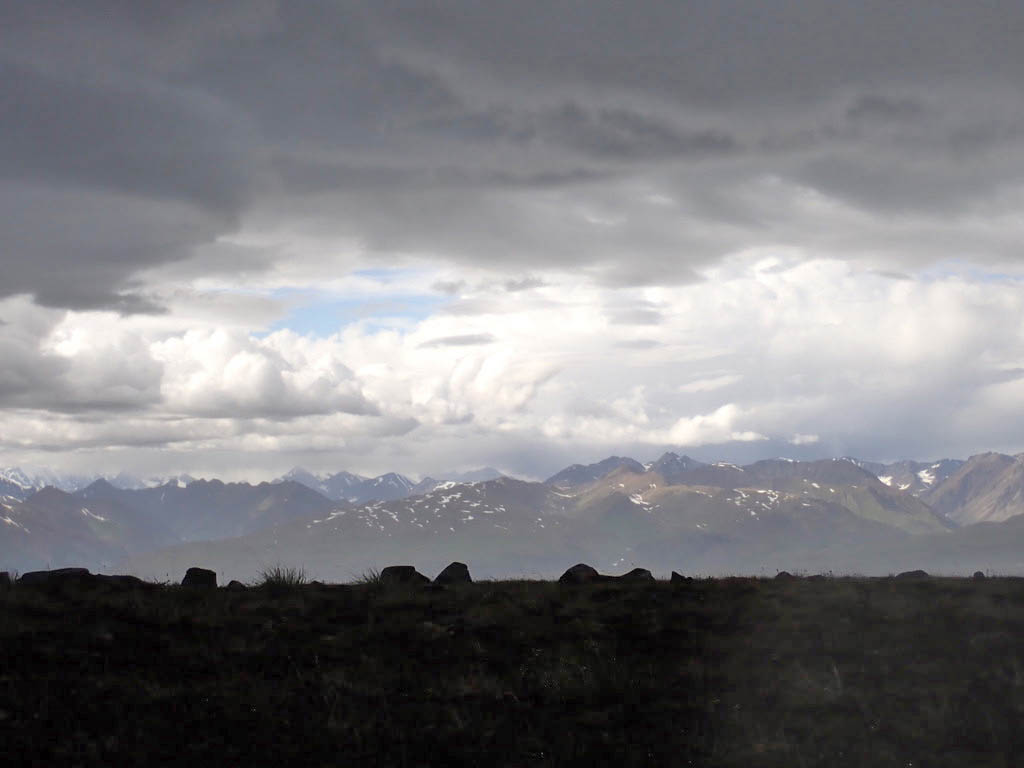
Saranac Lake High School Class of 2025 graduate Liam Fletcher spent 30 days backpacking in Alaska this summer with the National Outdoor Leadership School. (Provided photo — Amelia Draffen)
NOLS has had an Adirondack branch since 2011. Fletcher’s coursemate, Amelia Draffen, who took photos on their journey and was the “nicest person” Fletcher had ever met, took an Adirondack course before.
Emery said they learn independence and reliance on a team, as well as communication and confidence. She said the wilderness offers genuine self-esteem — not coming from anyone else’s approval.
The outdoors has a really fast feedback loop, Emery said. The students were responsible for heating, eating and respond to changes quickly.
–
Ups and downs
–
Fletcher and his coursemates were flown in by pilot Rob Wing to the Northern Talkeetna mountains near Denali State Park. They started near the town of Cantwell and traveled southwest to Hurricane Gulch.
He saw caribou and three grizzly bears, including one cub, and said there were bear tracks everywhere. There were lots of mosquitos. One of his coursemates needed regular medical care for infection from mosquito bites.
The students traveled with instructors for the first few weeks.
They learned how to cross rivers properly, got snow training and had a crash course on wilderness first aid. Fletcher said these medical practices are things everyone can learn and are very important. They learned how to handle someone in shock, how to stabilize their spine after a fall, how to stop deep tissue bleeding and how to make a sling. Fletcher kept pages full of notes. He said this knowledge can save someone’s life.
At the end of the course, they spent four days and three nights alone in groups of six — with only emergency communications if they needed it.
They drew up route plans for where they would hike and camp every night, and instructors followed a similar route at a distance, in case there was an emergency. Fletcher said they could see the instructors hiking in the distance on some days, but only occasionally.
He liked the independence the course gave him. It was a trial. They had freedom to make mistakes.
That’s part of the course, Fletcher said, learning to live with mistakes and adapt or endure them. If they walked in the wrong direction for two hours, they couldn’t just turn around. They had to find their way back on track.
On the second day, one student was making pancakes for the group. Instead of brown sugar, he added a brown curry bouillon soup broth powder.
“They tasted so bad. It was the worst meal,” Fletcher said. “It was a brothy pancake.”
They had to eat it, since it was some of the only food they brought. Fletcher said he lost a little weight during the trip.
His generation grew up with technology. Some students don’t do NOLS because they can’t imagine going without a phone for 30 days, Emery said. It was the longest Fletcher has gone without his.
He said it was nice to not be tethered to technology like in everyday life, but after a couple of days, he started to worry about his family. He wondered if they were all doing OK and felt disconnected. Eventually, he got used to it as he became more focused on the “here and now” — what was right in front of him. When they got their phones back, he said everyone spent an hour calling home.
Fletcher said he experienced homesickness in moments of quiet when he was by himself.
The lowest part of the trip was a day when they were bushwhacking through lowlands by a river with the brush snapping back in their faces all day long.
“When we got to camp, everyone was exhausted. That was a low point. People were saying they missed their families,” Fletcher said.
They covered 100 miles over 28 days.
He was used to doing 12-mile day hikes in the Adirondacks. In Alaska, they would hike for eight hours and only cover four miles.
Fletcher said there was frustration between people at times. Conflicts between people over setting a pace or taking a break added up and students clashed. But hiking in the Alaskan wilderness, there’s nowhere else to go and no one else to be around. They were all stuck with each other for 30 days, so they had to work it out.
He said a conflict management course was part of the trip. NOLS instructors are so used to it happening, they include it in every expedition.
“Week one is all sunshine and happiness,” Fletcher said. “And then week two hits and that’s when people start to go off on each other because they can’t stand the little things anymore.”
By week three, they start to figure it out. Week four was sunshine and happiness again.
The students still have a group chat going where they keep in touch.
There was literally a lot of sunshine for the entire trip. They arrived shortly after the equinox. For the first week, he said there was never darkness because the sun never sank low below the horizon. They started to get an hour of darkness at 2 a.m. toward the end of the course.
In the third week, they were camping on the side of a lake. There was a hill on the other side that they walked over and climbed up to watch the extended sunset.
“It was so beautiful,” Fletcher said. “It looked so picturesque, like a movie. We were looking over this wide valley and there was this river carving through it and mountains on both sides and the sun was orange.”
He said they sat there for three hours.
“We had really deep conversations and people were opening up,” Fletcher said.
It was a stand-out moment as they connected over the sunset.
The instructors told them while the wilderness is a good setting for opening up or being a leader, these things can be done anywhere. Fletcher said he is bringing the mindset he was in while in Alaska to his everyday life.
Fletcher is majoring in aerospace engineering at Embry-Riddle Aeronautical University. His classes started on Aug. 25.
“So far so good,” Fletcher said on Aug. 26.
His math professor hit them with a pop quiz on day one.
At the end of his sophomore year, he’ll have a choice to make — if he goes into rockets or aircraft. He’s been thinking about going the NASA route, but also wants to stay in a small town and could work on firefighting planes and helicopters out west.
Fletcher suggests anyone who takes a NOLS course buy a disposable camera to document their journey.

